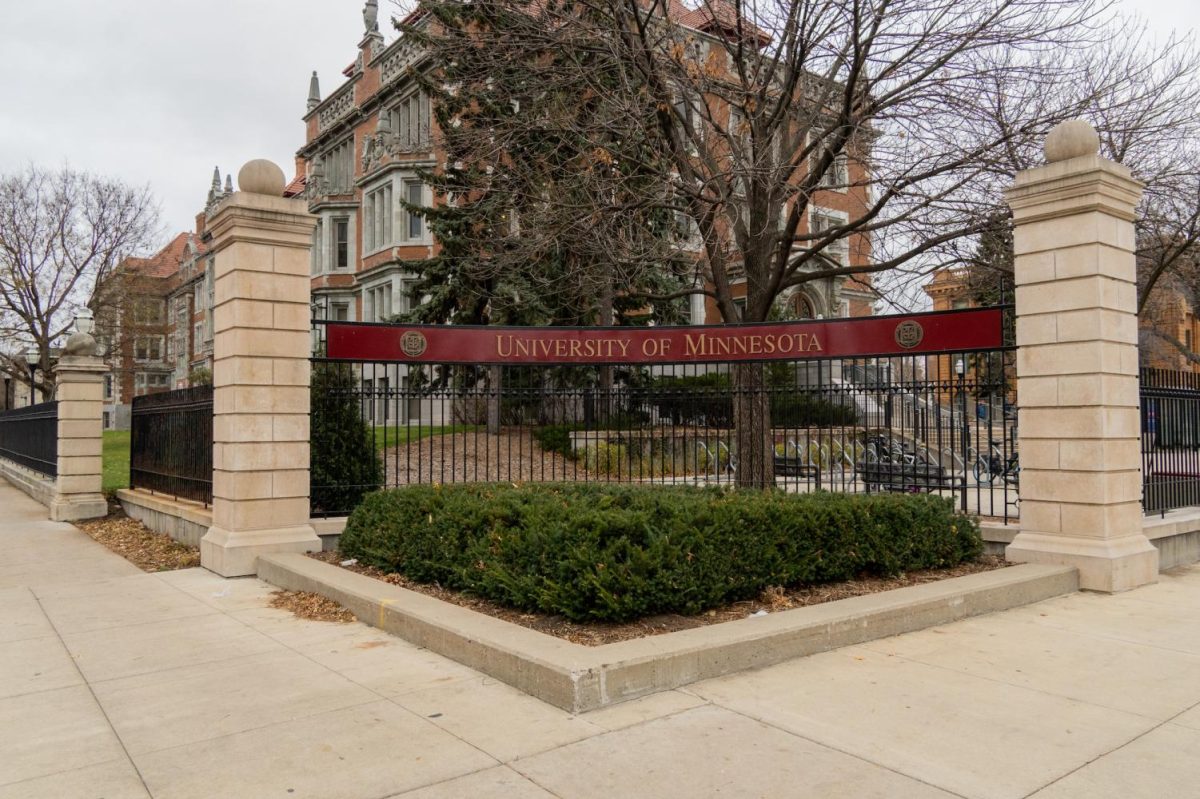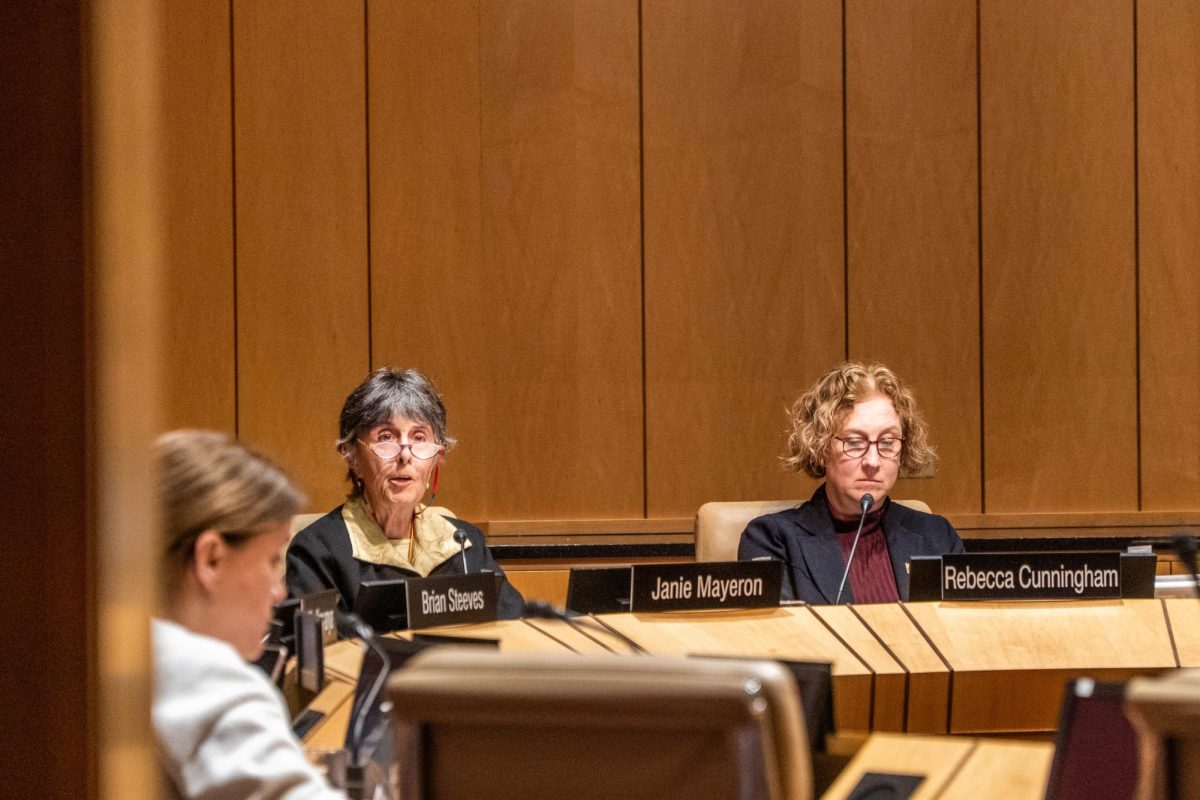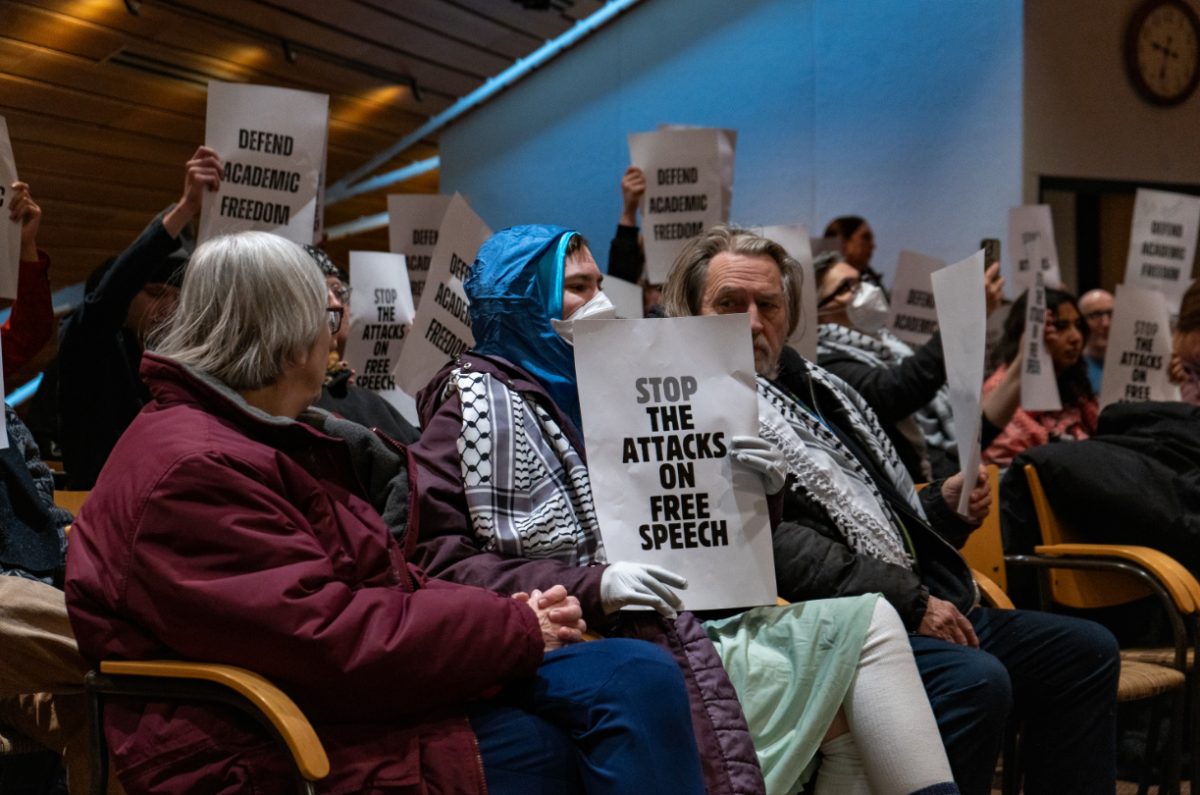The University of Minnesota Foundation (UMF) has seen its share of the University’s total endowment double to more than $4 billion in the last decade, giving the University the fourth-largest endowment of all Big Ten schools.
During its 10-year Driven campaign, the Foundation’s endowment grew by almost $2 billion, with almost half of the increase coming from 2021 alone. UMF Vice President of Marketing and Communications Sarah Youngerman said 2021 was a “really amazing year” for all endowments.
The Driven campaign began in 2011 and raised $4.4 billion, surpassing its $4 billion goal. One quarter of the money went to students and another quarter went to faculty research, Youngerman said. At the time, it was the fifth-largest campaign from a public research university.
The growth is not due to donor gifts alone — the Foundation endowment grew by around 40% in 2021 from the previous year, a symptom of market success, Youngerman said.
Americans donated over $58 billion to higher education institutions in 2023, according to a survey from the Council for Support and Advancement of Education. The survey also found gifts from organizations rose while donations from individuals and gifts supporting infrastructure declined.
Almost 40% of gifts to endowments go to financial aid, and nearly one-third of gifts to universities’ current operations go to research, according to the survey.
“The private sector is really heavily invested in the University of Minnesota in a way that really, I think, moves the needle and I don’t think we talk about that in this kind of holistic way,” Youngerman said.
The role of foundations
“Having a philanthropic arm for the University is really important,” Youngerman said. “The volume of scholarships and the need to supplement research costs and grow those portfolios really put a higher focus on philanthropy.”
Public foundations are unique to public colleges and universities because they keep private money separate from state funding, said Brian Flahaven, vice president of strategic partnerships at the Council for Advancement and Support of Education.
The first endowment of this kind was the University of Kansas Endowment Association in 1891, created by University officials who feared the state government would seize and redirect the funds.
“There are a few other public (universities) that don’t have foundations, and even the public (universities) that have foundations, a lot of them are different based on the institution, the culture,” Flahaven said.
For example, the University of Michigan was established before the state of Michigan, meaning it can operate its endowment without creating a separate nonprofit organization. Youngerman said the University of Michigan is “far less reliant on state support.”
Youngerman added her peers are often surprised at how much Minnesota gives the University, but “it doesn’t feel that way when we’re here.”
Foundations being legally separate from the institutions they serve requires a separate board from university boards manned by elected individuals, Flahaven said. This allows a university to appoint key supporters, alumni and community leaders best suited to building the university’s philanthropic resources, Flahaven added.
Only one-quarter of the UMF’s 44-person board is appointed each year, with appointees including the CEO of Minnesota United FC, the CEO of 3M, two regents and the chair of M Health Fairview.
Part of the reason for the board’s size was the Foundation’s 2013 merger with the school’s then-separate medical foundation, Youngerman said. To guarantee the medical foundation was represented, the number of seats on the board expanded. She said the medical school is “the largest philanthropy-producing entity at the University,” and it represents 20-30% of the total production.
The Foundation’s trustees decided to outsource management of the investment portfolio to the University of Minnesota Foundation Investment Advisors, a subsidiary nonprofit, when its net assets reached about $500 million over two decades ago, Youngerman said. She added the intention was to “professionalize the investment strategy” and “maximize the principles by which the investment policy was designed,” a trend in higher education at the time.
Having a subsidiary nonprofit like the Foundation is an institution’s decision and not uncommon, Flahaven said. Not all institutions have separate financial advising because their endowments may not be large enough to merit it, he added.
Foundation Salaries
Organizations like the Foundation operate in a “unique space” — they are neither private foundations nor community foundations because the money goes directly to one institution, said Russell Roybal, vice president and chief external affairs officer at the National Committee for Responsive Philanthropy.
Roybal said the National Committee for Responsive Philanthropy considers it good practice to minimize the gap between the CEO’s wage and the lowest-paid employee. The organization’s policy requires the CEO’s salary to not exceed four times the lowest wages.
In 2022, UMF President and CEO Kathleen Schmidlkofer had a salary of $500,000 while the lowest-paid employee made $44,500 — more than eleven times lower, according to University payroll data.
The Foundation CEO’s salary is determined based on the market and her peer group, Youngerman said.
But salary increases for the CEO position have been consistent with inflation, growing from $350,000 in 2010. The wages and compensation are also consistent with or lower than other foundations for Big Ten schools, such as the $715,000 salary for the University of Wisconsin Foundation’s president in 2022, according to its 990 forms.
Who’s going to pay for it?
The University’s endowment is split between the Foundation and the Office of Investments and Banking. The Foundation was created in 1962 as donations became more sophisticated, with the state having played a larger role in subsidizing education costs at the time, Youngerman said.
“Endowments are a critical part of the philanthropy and the fundraising, and frankly, the budgets for universities as well,” Flahaven said.
Donors want to invest in the “margin of excellence,” Youngerman said, and it is difficult to ask for help with costs like building maintenance because some donors consider it the state’s responsibility. More than 99% of donations are donor directed and can only be used for a specified cause.
When the state does not meet the University’s full request for funding — as was the case for fiscal year 2025 – philanthropy is not necessarily responsible for making up the difference, but the Foundation “certainly feels that tension,” Youngerman said.
The Foundation distributes roughly $250 million a year to the University.
“It’s not a huge portion,” of the University’s $4 billion budget, “but it’s certainly a portion,” Youngerman said.
The 2021 boost
The University’s total endowment grew from $3.8 million to $5.4 million in 2021, an increase of more than 40%. Of the growth, $900 million came from the Foundation’s endowment.
The Foundation received a typical $240 million in gifts in 2021, but the value of its assets grew significantly.
The Great Recession in the late 2000s was a difficult period for colleges and universities, and “going into the pandemic, there was a lot of fear, particularly when the economy dipped right at the beginning of the pandemic,” that similar trends would happen, Flahaven said.
“There was certainly a sense of, ‘We need to give back to help community organizations, to help institutions,’ and so I think that drove a lot of the giving,” Flahaven said.
Compared to the Great Recession, “fundraising was rather resilient during the pandemic,” Flahaven said.
The University endowment saw a decrease of 24.2% in 2009 from the previous year, one of the largest drops out of Big Ten endowments. Many universities saw a decline of around 20.8% during that time.
Roybal said the pandemic taught a lot of organizations that they need to have a “rainy day fund.”
“It was such a shock to the nonprofit ecosystem that so many organizations were not prepared to be able to cover even a few months of expenses, let alone a couple of years,” Roybal said.
During the Great Recession, some leaders at the University decided certain research was too important to halt, relying on donors committed to funding the research even if it meant dipping into the principal value, Youngerman said. The Foundation’s investment advisors built their current investment strategy during that period and allowed the endowment to see less loss than foundations with riskier strategies, she added.
Prioritizing long-term growth
“It’s benefiting both students now but also the future students who go to university, so it’s a different model than the current operations-giving most people think about,” Flahaven said. “You give money, and they use it right away.”
The Foundation’s investment strategy, in good years, will not benefit as much as other endowments, but it will rarely “suffer the consequences of a down market,” Youngerman said.
“We’ve seen trends away from giving to the endowment because a lot of donors want to see their dollars working like today, right now, spending it out,” Youngerman said.
The Foundation is designed so a $25,000 scholarship gifted several decades ago will grow significantly to have a bigger impact on future generations, Youngerman said.
“Maximizing long-term growth is almost, I would call it a fiduciary obligation of the Foundation,” Youngerman said. “To erode the principal (value) of any endowment would be the antithesis of why we exist.”
Donors have criticized the Foundation for not earning more in the market, Youngerman said. But using a more conservative investment strategy keeps the foundation safe from the “dramatic downsides of market fluctuations.”
“Oftentimes we’ll hear from (donors) that say, ‘Why are you not earning more money on the endowment,’ and ‘I can privately go and raise my $10,000 even faster than you all are doing,’” Youngerman said.
According to Youngerman, the Foundation is working through a conversation with President Rebecca Cunningham about what the next campaign might look like following the success of the Driven campaign.















Flora
Aug 3, 2024 at 6:40 am
Great news! There is plenty of money for financial aid, tuition reduction and employee wages! I’m sure an article about how all these resources will be equitably distributed is coming soon!